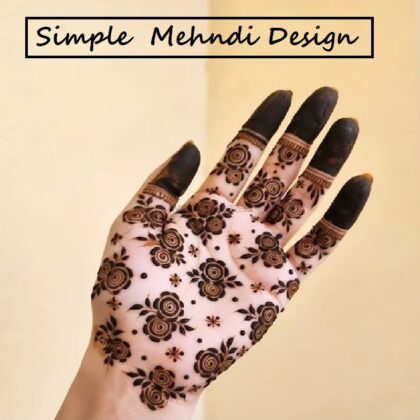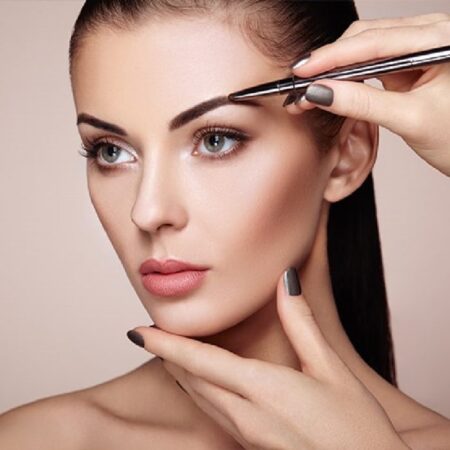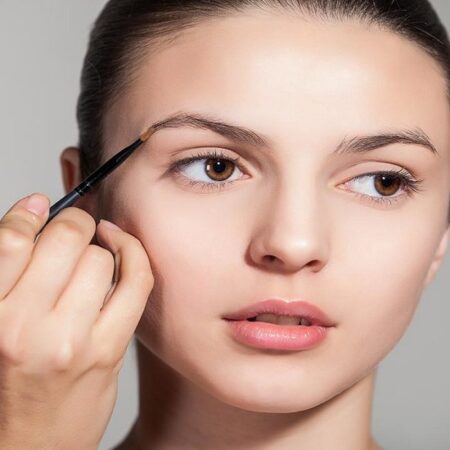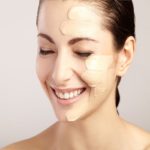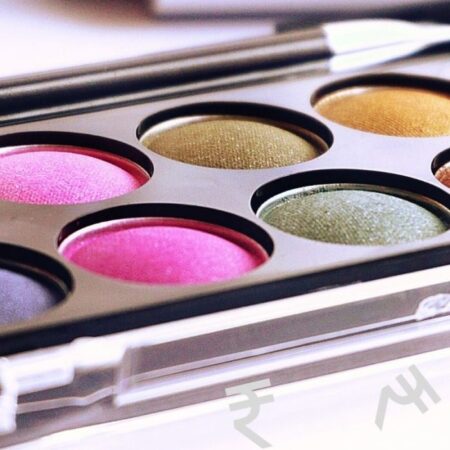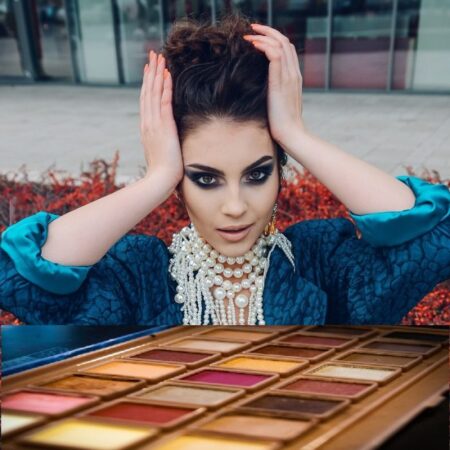
Do you love wearing foundation but, at the same time, are scared that it will look cakey? The key to achieving a flawless makeup look is getting your base right. Cakey makeup does not look pretty, but it is an easy problem to solve. From picking the wrong shade to applying it on dry patches, we all make some common foundation mistakes that lead to a cakey finish. In this article, we will tell you our tips on eliminating cakey makeup to create a flawless base.
Here’s our complete guide with some tips and tricks to fixing cakey makeup quickly. But first, let’s answer the most important question.
Table Of Contents
- Why Does My Makeup Always Look Cakey?
- How To Make Your Foundation Not Look Cakey And Ways To Fix It
- How To Avoid Cakey Foundation: 10 Simple Steps
- Tips On How To Avoid Cakey Foundation
- 9 Common Foundation Mistakes: How to Avoid Them
Why Does My Makeup Always Look Cakey?
While applying foundation, you might over-do it, apply it on visible dry patches on your skin, or not blend it well enough. All of these tiny mistakes lead to a cakey and chalky makeup look. Dead skin cells often cling to your face and form a rough layer, which does not allow the foundation to blend evenly on your face.
Another primary cause of cakey makeup could be dehydrated skin or not using the right skin care or makeup products for your skin type.
Here are some ways to prep your skin the right before applying foundation.
How To Make Your Foundation Not Look Cakey And Ways To Fix It
- Skin Care Routine
A fundamental step to avoid cakey makeup is to follow a proper skin care routine. Use a good exfoliator, moisturizer, face oil, and face serum. Try to use chemical exfoliators as they do not have any harsh microbeads. Go for exfoliators with ingredients like AHAs and BHAs that remove all the dead skin cells and make your skin soft and healthy. Do not forget to moisturize your face at least twice a day. Before going to bed, use a face serum as it provides excellent nourishment to your skin. Look for a face serum that contains hyaluronic acid to bind the water molecules into the skin.
- How To Prep Your Skin Before Applying Foundation
Your skin needs a proper prep routine before you start applying foundation. If you have dry skin, your foundation can settle on the dry patches and cling to your face. Thus, it is crucial that you start by applying a primer. Primer opens evens out your skin texture and creates a smooth base for your foundation.
Ensure that you apply a lightweight moisturizer, a face serum, or a facial oil at least 10 minutes before applying a primer. While applying primer, focus on the areas around your nose and the high ends of your face.
- The Right Way To Apply Foundation
After following these necessary steps, it is finally time to apply foundation. Choose a non-cakey foundation with medium to high coverage that does not require too much layering. Use a clean makeup sponge to apply the foundation in bouncing motions. Apply a single layer first, and then apply another coat if required. A makeup sponge prevents any kind of friction or streaking and makes your skin look flawless and natural.
Let’s now look at some easy steps to follow to stop your foundation from turning cakey.
How To Avoid Cakey Foundation: 10 Simple Steps
1. Use A Makeup Setting Spray
A full-face makeup routine includes many steps – base, contouring, bronzing, highlighting…By the time you are done with the whole process, your face could end looking like it is painted. You need to melt all of that makeup into your skin using a setting spray. A setting spray is an ultimate secret to a flawless makeup look. It eliminates all the residue and gives you a natural finish.
2. Blend The Foundation Well
If your foundation looks white and chalky after application, then you’ve not blended it well. Use a damp makeup sponge to eliminate all the fine lines and streaks to give yourself even-looking skin.
3. Hydrate Your Under-Eye Area
Does your under-eye look cakey even after following the entire base routine properly? That means it requires some hydration. A simple hack to hydrate your under-eye area is to use a face spray or a toner that contains squalane. Spritz it on your makeup sponge, dab off the excess, and gently press it under your eyes.
4. Dab Off The Excess
If you think you have gone over the top with your foundation, there’s nothing to be worried about. Take a damp makeup sponge and press it gently on your face where you think it looks uneven.
5. Use A Face Oil
One of the preliminary causes of cakey makeup is dry skin. No matter how much you prepare your skin before your makeup routine, your skin ends up looking patchy. The quick fix for this is to take a few drops of face oil at the back of your hand. Dab a makeup sponge into the oil and press it very lightly on your face, especially on the patchy areas. With this hack, all your foundation, concealer, and bronzer will blend seamlessly into your skin.
6. Use A Setting Powder For Oily Skin
You need to get your foundation right, irrespective of your skin type. If you have oily skin, the trick to avoid cakiness is going to be different. Instead of using a face oil, use a translucent setting powder on your face’s oily areas, especially the T-zone. After this, you can continue with the rest of the steps.
7. Avoid Applying Too Much Makeup On Creased Areas
While applying makeup, we often try to cover our fine lines with more makeup. But, you should consider doing the opposite because less is more. Avoid the areas where you have lines and creases. After you’re done applying foundation on the rest of your face, use whatever little product is left on the sponge and dab it gently on those areas.
8. Apply Eyeshadow Primer On Creased Areas
Have you ever considered using an eyeshadow primer on the creased areas of your face? No, right? An eyeshadow primer evens out your face’s fine lines just as it does on the eyes. Take a tiny amount of eyeshadow primer and dab it on the creased areas of your clean, moisturized face. Then, take a little bit of setting powder and press it on those areas. Now you can comfortably apply foundation and concealer. Finally, don’t forget to set the entire thing with a loose powder and setting spray.
9. Mix The Right Foundation With The Right Primer
Not all primers work well for all foundations. So choose the right products! According to professionals, silicone-based primers work well for silicone-based foundations. Water-based primers are much more flexible and work well for both water- and silicone-based foundations.
10. Take Some Time Before Setting Your Under-Eye Area
Do you find creasy lines under your eyes even after finishing your makeup? Don’t rush. Wait for a few minutes to set your under-eye area after applying concealer. You can focus on your eye makeup till the concealer sets on your skin. Once you’re done with your eye makeup, use a little bit of loose setting powder to fix your under-eye area.
Here are a few tips to avoid ending up with a cakey face.
Tips On How To Avoid Cakey Foundation
- Take Your Time
Your foundation often ends up looking cakey because you rush through applying it. If you don’t want your makeup to go wrong and last on your face for hours, you need to be patient. Apply moisturizer or face oil at least 5-7 minutes before your makeup routine. The moisturizer needs time to sit on your skin before you start with your foundation.
- Choose The Right Shade Of Foundation
Choosing the wrong shade of foundation is a common blunder that we often make. A wrong shade is more prone to causing cakiness. Before selecting a shade, you need to figure out your skin tone and undertone. Go to a makeup store and swatch some shades to find the right one for your skin.
- Use The Proper Makeup Tools
Instead of using your fingers to even out your foundation, we strongly recommend that you use a soft makeup sponge or a foundation brush to get a smooth and natural finish.
- Use A Waterproof Concealer
If you don’t want your concealer to settle in the lines under your eyes due to sweat, you should avoid using a cakey concealer. Invest in a good waterproof concealer that stays in place for a long time without washing away.
- Be Light And Gentle
While applying foundation on your face, be very light and gentle with your motions. Do not apply extra layers of foundation unnecessarily as it ends up looking fake and chalky. Use a light hand. Always remember that a minimum amount of foundation, concealer, and setting powder can go a long way.
Now comes the most important part –the most common mistakes that you make when applying foundation and how to avoid them. Check them out!
9 Common Foundation Mistakes: How to Avoid Them
1. Not Choosing The Right Foundation Shade
A wrong foundation shade is a big no-no! Always ensure that your base makeup perfectly matches your natural skin tone. According to professionals, swatching foundation shades in natural light is the best way to pick the right one. Let the foundation sit on your skin for some time. If it does not oxidize and change its tone, you’ve found the right one for you.
2. Applying Too Much Foundation
A common misconception about applying foundation is that using too much of it will even out your complexion. You’re wrong! Adding extra layers of foundation makes your face look chalky and cakey. Therefore, go light on your base makeup.
4. Not Considering The Undertone Of Your Skin
Picking the right foundation can be tricky. The key here is to figure out your skin’s undertone. Professional makeup artists say that cooler skin tones tan a pink/cinnamon shade and should go for a cooler foundation shade. People with warmer skin tones don’t burn easily and should opt for a foundation with a yellow undertone. Check out this article if you want to figure out your skin’s undertone.
4. Not Prepping Your Skin Before Applying Foundation
Your foundation looks patchy and uneven when it clings to the dry patches on your skin. So, moisturize your skin and apply a face serum or a face oil before starting with your base makeup. Let the moisturizer settle on your skin for a few minutes. This will help your skin look naturally smooth. You can also use a hydrating face spray to hydrate and nourish your skin.
5. Not Applying Primer
Don’t miss out on primer. Applying a primer before your makeup is a necessary step that you often overlook. It helps in creating a smooth texture on your skin. This prevents your foundation from getting patchy, uneven, and blotchy. Focus on the areas around your nose while applying primer.
6. Not Setting Your Makeup
After you’re done with your base makeup, it is essential to make sure that your makeup is set in place. Dip a fluffy brush into translucent loose powder, brush off the excess, and apply it all over your face to set your base makeup.
7. Blending Foundation Down To Your Neck
Contrary to popular belief, you don’t need to blend the foundation down to your neck. All it does is settle into the lines on your neck and stains your collars.When you choose the right shade of foundation according to your skin type, you don’t need to do this.
8. Not Using The Right Makeup Tools To Apply Foundation
Get your makeup tools right. Consider using a makeup sponge or a foundation brush to dab foundation on your face instead of using your fingers.
9. Not Cleaning Your Makeup Tools Often
Not cleaning your makeup brushes and sponges for long periods of time may cause bacteria to breed in them. Clean your makeup tools frequently with an antibacterial washing liquid, dry them thoroughly, and store them properly.
Fixing cakey makeup is not as difficult as it seems. If your makeup goes wrong, you don’t have to remove it and start all over again. Who has time for that? The right makeup products, application tools, and the hacks can give you a naturally blended look. Here’s to never wondering”Why does my makeup look dry and cakey?” ever again!
Expert’s Answers For Readers’ Questions
Q. Which foundation is not cakey?
A. The right foundation formula depends on your skin type. If you have oily skin, a non-comedogenic and oil-free formula will work great for you. If you have dry skin, use a creamy foundation to keep your skin moisturized and prevent dry patches.
Q. Why does my foundation look bad?
A. There could be quite a few reasons for your foundation to look bad. Uneven skin texture, large and visible pores, skin bumps, fine lines, and wrinkles do not let foundation sit right on your skin. The easiest way to solve this problem is to apply primer before going in with your foundation.
Q. Why does my makeup look patchy?
A. There are a lot of reasons that can cause your makeup to look patchy. The most common reason could be having too dry or too oily skin.

